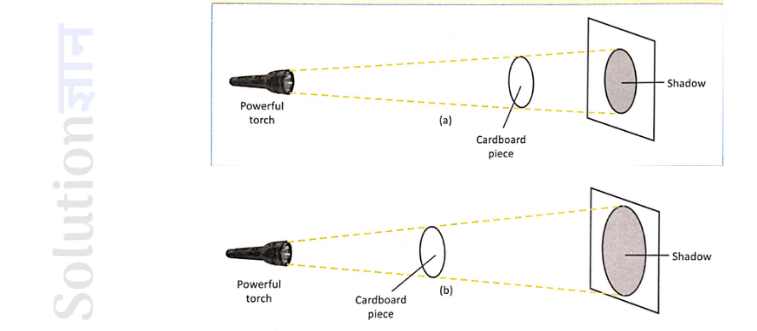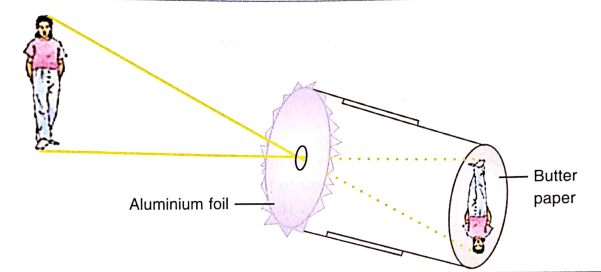If you are looking for the DAV class 6 Science chapter 12 solutions Light and Shadows then you are at right place. With the help of DAV class 6 Science solutions, you can easily grasp basic concepts better and faster. It is a perfect guide to help you to score good marks in DAV class 6 science examination.
If you are looking for more solution of DAV Science book of class 6 then you can freely visit or check our site. We regularly update our site solutiongyan with new content every day. So, you can check it regularly for latest content.
DAV Class 6 Science Chapter 12 Solutions Light and Shadows
DAV class 6 Science book question answer chapter 12 Light and Shadows is given below. Here class 6 Science question answer is provided with great explanation.
Highlights
A. Fill in the blanks.
B. Match the following:
C. Tick the correct option.
D. Answer the following questions in brief.
E. Answer the following questions.
A. Fill in the blanks.
1. An object that allows light to pass through it (almost) completely, is known as a ___________ object.
2. A shadow is observed, on a screen, when an ___________ object comes in, between it and a source of light.
3. Shadows formed are always ___________ irrespective of the colour of the object.
4. A ___________ is a natural phenomenon that sometimes occurs on a new moon day.
5. When light is reflected from a plane mirror, it changes its ___________ of propagation.
Answer: (1) transparent (2) opaque (3) black (4) Lunar eclipse (5) direction
B. Match the following:

Answer: (1) e, (2) d, (3) a, (4) c, (5) b
C. Tick the correct option.
1. Objects, like the sun, which emit light of their own, are called
Answer: luminous objects
2. An object, through which we can see partially, but not very clearly, is
Answer: a sheet of tracing paper
3. The ‘something’, which can change its shape and size, and may appear and disappear anywhere/anytime, is known as a-
Answer: shadow
4. When sun (during early morning) is behind an object, the size of its shadow in comparison to that of the object would be
Answer: larger
5. The image, formed by a pinhole camera, is
Answer: inverted and diminished
D. Answers the following questions in brief.
1. Classify the materials given below as opaque, transparent or translucent.
air, smoke, fog, aluminium sheet, wooden board, cellotape, polythene sheet, lime juice, wax, rubber, tyre and milk
Answer:
Opaque materials – aluminium sheet, wooden board, rubber, tyre and milk.
Transparent materials – air, cello tape, Polythene sheet, lime juice.
Translucent materials – smoke, fog, wax.
2. State the type of path that light ordinarily follows when going from one point to another?
Answer: straight line
3. Do fishes cast shadows in water?
Answer: Yes, fishes cast shadows in water because the body of a fish is opaque. Hence if sunlight falls on it, shadow will form on the other side. But it depends on how far is the screen from the fish.
4. On a sunny day, two identical bedsheets, of red and green colour, are hanging on a clothes line. What would be the colour of the shadows of these two bed sheets?
Answer: Shadow will form black in colour. It is so because the colour of shadow does not depend on the colour of the object.
5. State the relative positions, of the sun, moon and the earth, during a lunar eclipse.
Answer: During the lunar eclipse the earth comes in between the sun and the moon in a straight line.
E. Answer the following questions.
1. Cover the face of a torch with a transparent coloured paper. Send its beam through an opaque object. What do you observe?
Answer: When we Cover the face of a torch with a transparent coloured paper and send its beam through an opaque object. Then we observe that a shadow is formed in black colour. It means that the colour of the shadow does not depend on the colour of the light.
2. With the help of suitable diagrams, show that the size of shadow formed, depends upon the relative position of the source and the opaque object.
Answer: Send a beam of light from the powerful torch over a circular piece of cardboard to obtain its shadow on the screen (opposite wall).

Now move the Cardboard piece towards the torch piece. We observe that the shadow has become larger in its size as compared to the first case.
3. Raghav set up the following arrangement in the science laboratory. He put (i) a steel glass (ii) a transparent glass, at the position P. one by one. Would a shadow be formed in each case? Give reason for your answer.
Answer:
(i) In this case shadow will form because a steel glass is an opaque material.
(ii) In this case shadow will not form because a transparent glass is kept at P.
4. With the help of a diagram, show the formation of an image by a pinhole camera.
Answer:

5. Give the meaning of the term ‘Lateral inversion. Suggest how it may be used to send a ‘coded (secret)’ message.
Answer: When we raise our right hand in front of a plane mirror, our image appears to raise its left hand and vice-versa. This property is called lateral inversion.
The ambulance vans needed medical emergencies make use of the phenomenon of lateral inversion. The word AMBULANCE is written in lateral inversion on their front side. The driver of a car going ahead of this vehicle sees it as AMBULANCE and therefore gives the right way to such vehicles.

Thanks for your answer its really good and helpfull to me
Thanks ????????
Max level for cheating in exam ????????????????
My mam give us answers to write from here.#mamexpose#
Yes
Exactly what I want
Bro,it’s really helpful for us ,thanks a lot to u ..
????
❤️❤️❤️❤️???????????????? very nice learning app
Yes
Very good answers
Thanks,will be helpful for exam ????????????
not gone’a lie but some of the answers are not same but some are same.
Good it help me and thank you
It is a good site for learning ???? ????????????
Thanks
THIS SITE IS HELPFUL FOR ME
Very nice answer
Thanks for the support
Very useful and simplified answers. Thank you
Very useful and simple answer
Who is from SR DAV PURNEA BIHAR
I am agree ????
FU*k????
Andi bandi sandee Jo ham ko gali de wo ran*I ????????????????????????????????????????????????????????????????????????????????????????????????????????????????????????????????????????????????????????????????????????????????????????????????????????????????????????????????????????????????????????????????????????????????????????????????????????????????????????????????????????????????????????????????????????????????????????????????????????????????????
Andi bandi sandee Jo ham ko gali de wo ran*I ????????
My class teacher teaches us science and give us answer from here even out school does the same